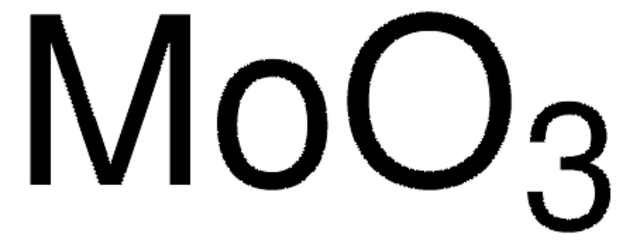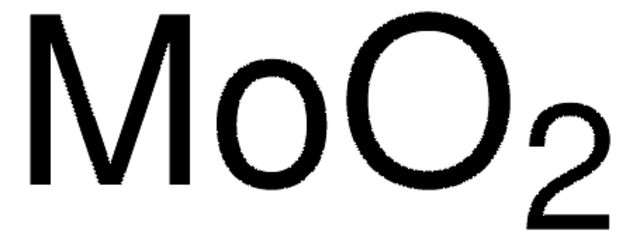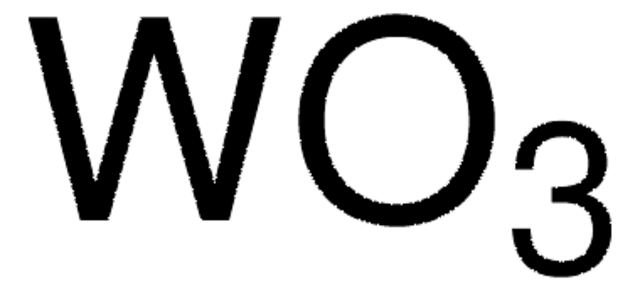775703
Molybdenum(VI) oxide
nanopowder, 100 nm (TEM), 99.5% trace metals basis
Sinónimos:
Molybdenum trioxide
About This Item
Productos recomendados
Quality Level
assay
99.5% trace metals basis
form
nanopowder
particle size
100 nm (TEM)
mp
795 °C (lit.)
SMILES string
O=[Mo](=O)=O
InChI
1S/Mo.3O
InChI key
JKQOBWVOAYFWKG-UHFFFAOYSA-N
¿Está buscando productos similares? Visita Guía de comparación de productos
Categorías relacionadas
Application
signalword
Warning
hcodes
Hazard Classifications
Carc. 2 - Eye Irrit. 2 - STOT SE 3
target_organs
Respiratory system
Storage Class
11 - Combustible Solids
wgk_germany
WGK 1
flash_point_f
Not applicable
flash_point_c
Not applicable
Elija entre una de las versiones más recientes:
Certificados de análisis (COA)
¿No ve la versión correcta?
Si necesita una versión concreta, puede buscar un certificado específico por el número de lote.
¿Ya tiene este producto?
Encuentre la documentación para los productos que ha comprado recientemente en la Biblioteca de documentos.
Los clientes también vieron
Artículos
The production of hydrogen by catalytic water splitting is important for a wide range of industries including renewable energy petroleum refining and for the production of methanol and ammonia in the chemical industry.
Nuestro equipo de científicos tiene experiencia en todas las áreas de investigación: Ciencias de la vida, Ciencia de los materiales, Síntesis química, Cromatografía, Analítica y muchas otras.
Póngase en contacto con el Servicio técnico











